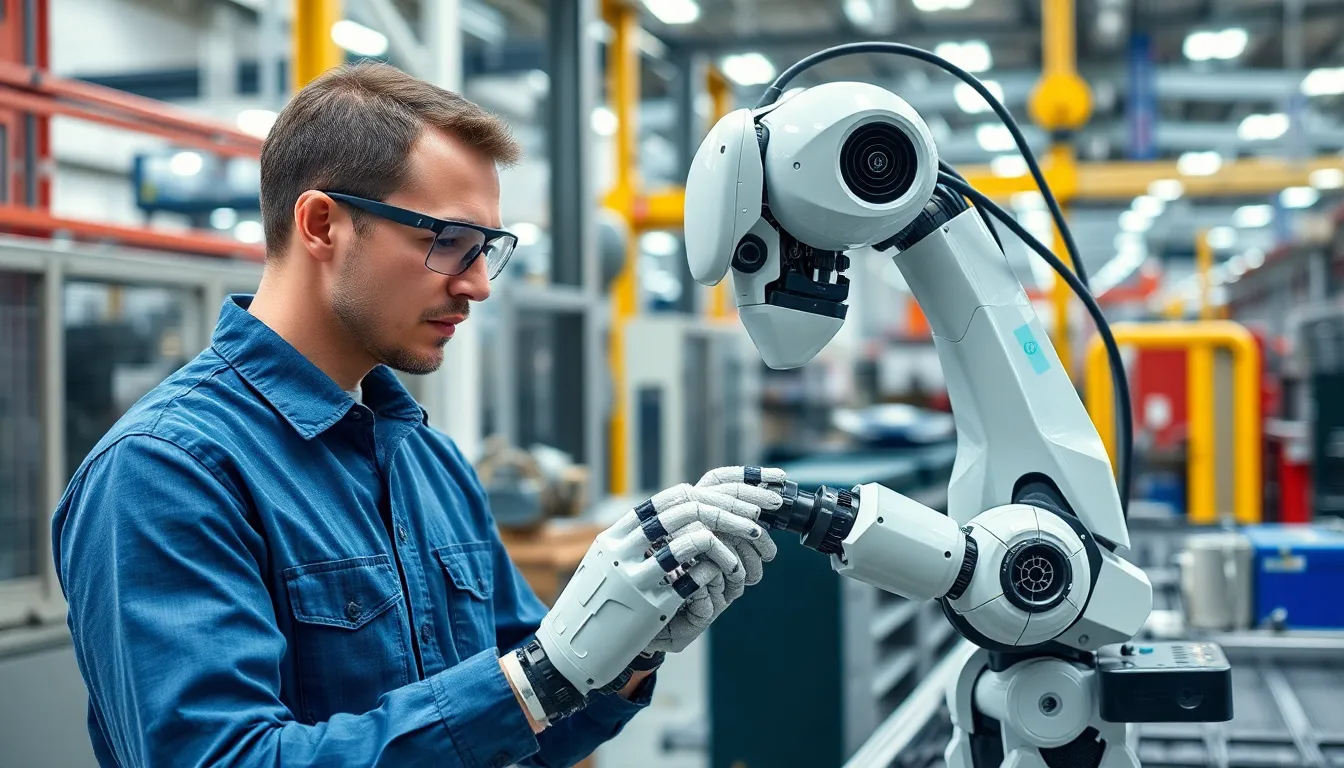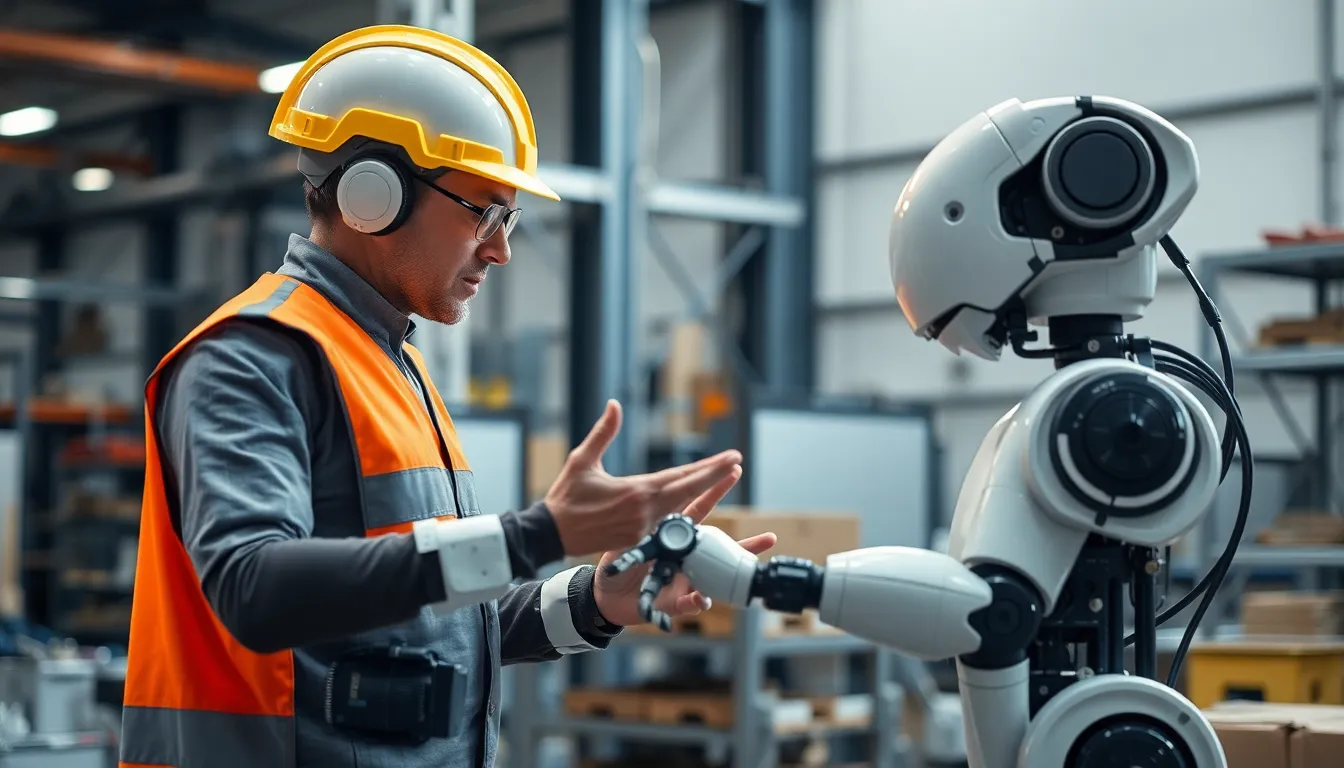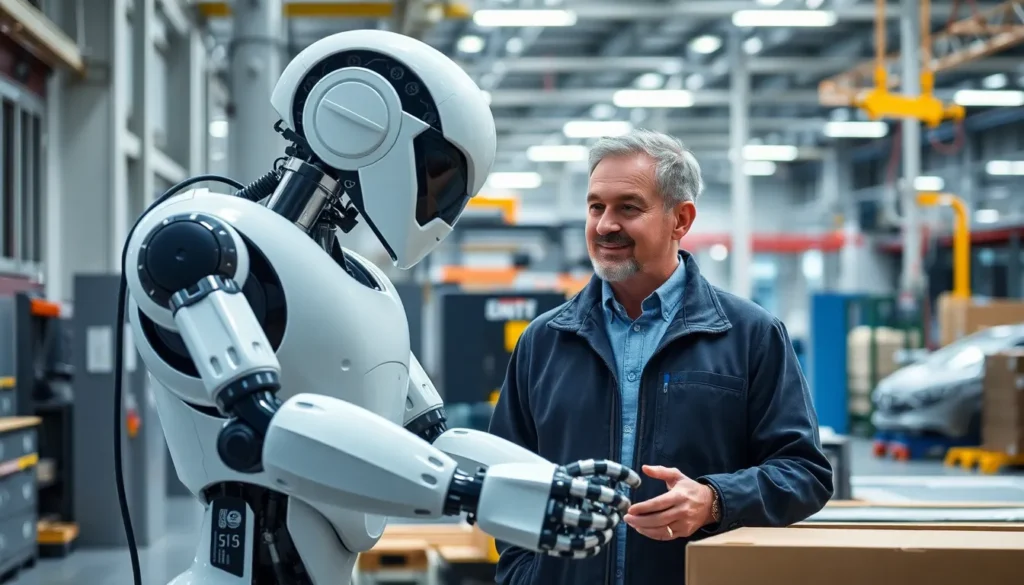Table of Contents
ToggleIn a world where robots are no longer confined to sci-fi movies, Veo Robotics is leading the charge in making factories safer and smarter. Imagine a workplace where machines don’t just follow orders but also understand their surroundings—sounds like something out of a futuristic comedy, right? Well, it’s happening now, and it’s not just a punchline.
Overview of Veo Robotics
Veo Robotics pioneers in the field of collaborative robotics. The company’s distinctive approach focuses on blending safety with efficiency in automated environments. Advanced sensor systems enable robots to understand their surroundings and react accordingly. These features reduce risks associated with traditional machinery, enhancing workplace safety.
Artificial intelligence plays a crucial role in Veo’s robots. The integration of real-time data processing allows machines to make informed decisions on the production floor. For instance, robots can identify human workers and adjust their actions to avoid accidents. This proactive capability sets Veo Robotics apart from conventional automation.
Veo Robotics emphasizes user-friendly experiences. Intuitive interfaces allow operators to adjust robot settings easily and efficiently. Consequently, this accessibility accelerates the adoption of robotics in various sectors, including manufacturing and logistics.
Companies leveraging Veo technologies benefit significantly. Efficiency gains are evident, with improved cycle times and productivity. Furthermore, enhanced worker safety leads to lower injury rates, contributing positively to company culture.
The future of Veo Robotics looks promising. With continued advancements in machine learning and computer vision, the potential for innovative applications grows. Industries increasingly recognize the advantages of adopting intelligent robotics, moving away from traditional mechanization.
Through these innovations, Veo Robotics is transforming factories into smarter workplaces. Productivity, safety, and adaptability define this new industrial landscape, illustrating the impact of intelligent automation on modern manufacturing.
Key Technologies Behind Veo Robotics


Veo Robotics leverages several key technologies to enhance the functionality and efficiency of industrial robots, focused on collaboration, safety, and adaptability.
Collaborative Robots
Collaborative robots, known as cobots, play a crucial role in Veo Robotics’ offerings. These robots work alongside human operators, improving workflows and fostering a safer work environment. Advanced sensors enable cobots to detect human presence and adjust their actions accordingly, promoting real-time interaction. This allows for seamless cooperation between machines and people, enhancing productivity. Many manufacturers benefit from increased operational efficiency by integrating cobots into their processes.
Computer Vision
Computer vision technology enhances the capabilities of Veo Robotics’ systems, allowing robots to perceive their surroundings accurately. By utilizing high-resolution cameras and advanced algorithms, machines can identify and classify objects in their environment. This technology improves navigation and decision-making, enabling robots to adapt their actions based on real-time data. Several applications in manufacturing and logistics utilize computer vision for tasks such as quality inspection and inventory management. Through this integration, Veo Robotics optimizes processes, reducing errors and increasing overall efficiency.
Applications of Veo Robotics
Veo Robotics exhibits a range of applications across industries, particularly in manufacturing and healthcare. These fields benefit significantly from innovative robotic solutions.
Manufacturing
Automotive assembly lines frequently employ Veo Robotics systems, optimizing production efficiency. Collaborative robots seamlessly integrate into existing workflows, enhancing tasks like material handling and quality inspection. Human workers benefit from increased safety, as cobots adjust their behaviors based on real-time analysis of their surroundings. Productivity boosts arise when manufacturers implement these intelligent systems, leading to shorter cycle times and reduced errors. Companies that adopt Veo technologies often experience expedited operations, improving overall output without sacrificing worker safety.
Healthcare
In healthcare, Veo Robotics transforms patient care settings. Robotic systems assist with logistical tasks such as medication dispensing, ensuring timely and accurate delivery. Collaborating with medical staff, these robots enhance workflows, allowing healthcare professionals to focus on patient interactions. Additionally, surgical applications utilize advanced computer vision, providing surgeons with critical insights during procedures. When robots handle repetitive administrative functions, healthcare providers can allocate resources more efficiently. The integration of Veo Robotics contributes to enhanced operational efficiency in hospitals and clinics, underscoring its positive impact on patient care.
Benefits of Veo Robotics
Implementing Veo Robotics technology in workplaces offers numerous advantages. Enhanced safety emerges as a primary benefit when robots can detect human operators and adjust their movements accordingly. Significant improvements in operational efficiency follow, as collaborative robots (cobots) work seamlessly alongside human employees, streamlining processes.
Productivity gains represent another major benefit. Companies that integrate Veo’s intelligent automation experience reduced cycle times and increased output. Data from various industries indicates that productivity levels can increase by up to 40% when cobots are employed effectively.
Cost reduction also plays a vital role. Through optimized operations, businesses witness lower labor costs and decreased error rates. This minimizes waste and maximizes resources, further boosting profitability.
User-friendly interfaces contribute to successful implementations. Workers find it easy to adjust robot settings, leading to greater acceptance and utilization of the technology. The straightforward setup encourages diverse sectors, from manufacturing to logistics, to embrace automation.
Versatility stands out as an essential feature of Veo Robotics systems. Applications range from material handling in automotive assembly to assisting with medication dispensing in hospitals. Each environment benefits uniquely, showcasing the adaptability of Veo’s solutions.
Quality improvements emerge through the advanced computer vision technology employed by Veo. Robots equipped with high-resolution cameras and smart algorithms enhance navigation capabilities, enabling precise quality inspections and efficient inventory management.
Overall, these benefits collectively foster a culture of safety, efficiency, and continuous improvement in organizations choosing to implement Veo Robotics solutions.
Challenges and Considerations
Implementing Veo Robotics technology presents several challenges that organizations must address. Safety remains a primary concern, as integrating cobots requires careful planning to ensure they operate harmoniously alongside human workers. Organizations must conduct thorough risk assessments to identify potential hazards and establish protocols that promote a safe working environment.
Training staff on new technologies poses another challenge. Employees may need instruction on operating and interacting with these intelligent systems. Providing comprehensive training ensures that workers can effectively use cobots, maximizing operational benefits while minimizing mistakes.
Cost implications also play a significant role in the adoption of Veo Robotics systems. While productivity boosts are evident, initial investments in technology may cause hesitation among potential users. Organizations must evaluate long-term gains against upfront costs to make informed decisions.
Technical limitations can hinder functionality. Although advanced sensor systems support real-time data processing, unforeseen environmental factors may affect performance. Addressing these limitations means continual assessment and technology updates as necessary.
Industry regulations introduce additional complexities. Compliance with safety standards requires continual monitoring of evolving guidelines. Organizations must stay informed about relevant regulations to avoid penalties and ensure worker safety.
Integration with existing systems requires careful consideration. Organizations need to ensure that new robotics solutions seamlessly work with current workflows and processes. Proper integration enhances efficiency and minimizes disruptions to ongoing operations.
Adopting Veo Robotics technology fosters improvements in productivity and operational safety. Although challenges exist, proactively addressing these considerations leads to a more effective and harmonious implementation of intelligent robotics across industries.




